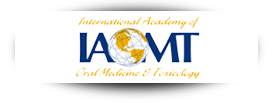Orofacial Myofunctional Disorder

The Importance of Proper Swallowing
Did you know that, on average, a person will swallow anywhere between 500 to 1000 times a day? The act of proper swallowing requires the muscles and nerves in your tongue, throat and cheeks to work together in harmony.A proper swallow requires your tongue to act as a fulcrum, pressing firmly against the roof of your mouth, so that the rest of the muscles involved in swallowing can function properly. Alternatively, a person with OMD could see a situation where their tongue, instead of pressing to the roof of the mouth, will instead press against or spread between teeth. This is called tongue thrust. This can cause your teeth to begin to spread out of place and, in children who haven’t yet gotten their teeth in, prevent teeth from breaking through the gums, teeth crowding, narrow arches, and airway issues. Other issues that may result from OMD can include:
- Cosmetic issues affecting the muscles of the face, causing a dull and sluggish appearance with weak lips. A facial grimace – caused by the tightening of the cheeks, chin and lips – can also form resulting in a knobby chin (or chin button).
- Speech problems such as the development of a lisp or difficulty articulating sounds due to muscles in the lips and tongue being incorrectly postured.
Orofacial Myofunctional Therapy

The therapy is painless, and the exercises are straightforward and simple. For success in this therapy, consistency is required. The exercises prescribed by our OMT Therapists, must be every day until you have retrained your muscles to follow proper movement patterns. The treatment consists of these exercises and will normally span a 4 to 12-month period.
In situations where OMD has caused malocclusion, learning proper swallowing techniques should prevent further damage. Additional orthodontic appliances or braces may be needed to correct any dental problems that have already occurred.
With orofacial myofunctional therapy, you can regain the joy of eating and speaking while seeing cosmetic improvements that will restore your self-esteem. Those kinds of results make this therapy popular! If you have further questions, please email: OMT@PALMERDMD.COM
Airway and TMJ
The normal way to breathe is through your nose. As we grow and develop, certain things such as pollen, cow milk, and other variables can cause an allergic reaction, causing the lymphoid tissues known as tonsils and adenoids to become swollen.
During mouth breathing, the pressure from the cheeks is unopposed by the tongue. The oral system becomes unbalanced and results in the deformation of the upper jaw, creating a v-shaped arch as opposed to a correct u-shaped arch. This also produces an incorrect swallowing function. Upon swallowing, the tongue rests on the lateral teeth, hindering normal tooth eruption, causing a lateral tongue thrust. A constantly open mouth causes the incisors to over-erupt. The result is the deformation of the lower arch known as the bicuspid drop-off. The result of this deformation of the upper and lower arches is the presence of premature contact upon closing which shifts the lower jaw distally off of the physiologic trajectory. The narrowing of the upper arch pushes the lower jaw back - this forces the TMJ condyle to shift distally while the TMJ disc shifts forward. Upon opening, the disc can shift onto the condyle to restore the TMJ's correct position and then shift back to an incorrect forward position upon closing. This is what causes a reciprocal click. In addition, the muscles could be in a state of hypertonus or spasm which can result in tension headaches. An incorrect position of the lower jaw can result in pair functional activity of the muscles, such as clenching and grinding. Over time, grinding can result in severely worn down teeth. As a result, the teeth become even shorter, the lower jaw shifts distally even further and the vertical of the bite decreases. In time, joint degeneration occurs. The joint becomes deformed, and the ligaments of the joint become damaged. As a result, the TMJ disc can get trapped in front of the condyle. While the click may go away, limited mouth opening will occur. A distally shifted jaw and tongue position results in even further restrictions of the airway. In order to open up the airway, the neck moves forward and the head tilts backward. This stresses the spine and fatigues the neck muscles which results in neck, back, and shoulder pain.
Palmer Distinctive Dentistry



At Palmer Distinctive Dentistry, we believe that oral health and overall wellness are linked. This is our focus when attending to our guests’ dental needs. Giving beautiful, healthy smiles to the residents of Greenville, SC is our goal.
Heading our team is Founder Dr. John J. Palmer, a Medical University of South Carolina School of Dentistry graduate. A dedicated holistic dentist and pioneer in advanced dentistry, he incorporates the latest technologies and IAOMT-certified methods and stays abreast of modern developments in biological dentistry.
Dr. Debra G. Adams received her Bachelor of Science from Huntingdon College in Montgomery, AL, and worked as a dental assistant, before graduating from dental school at the University of Alabama, Birmingham. Dr Adams is SMART certified through the IAOMT and is dedicated to giving our guests the best treatment possible.
Dr. Ashley Hurley has been in private practice since 2020 and is thrilled to join our Palmer Distinctive Dentistry holistic dental office as a Dental Associate! Dr. Hurley earned her undergraduate degree from Louisiana State University (2012-2015), a certificate from the LECOM post-baccalaureate program, and her Doctorate in Dental Medicine from Roseman University College of Dental Medicine in 2020. Dr. Hurley has worked on multiple scientific projects. She has also volunteered in various ways for communal service over the years. She is excited to positively affect the Upstate community by serving you while assuring your trust is always in good hands.
























